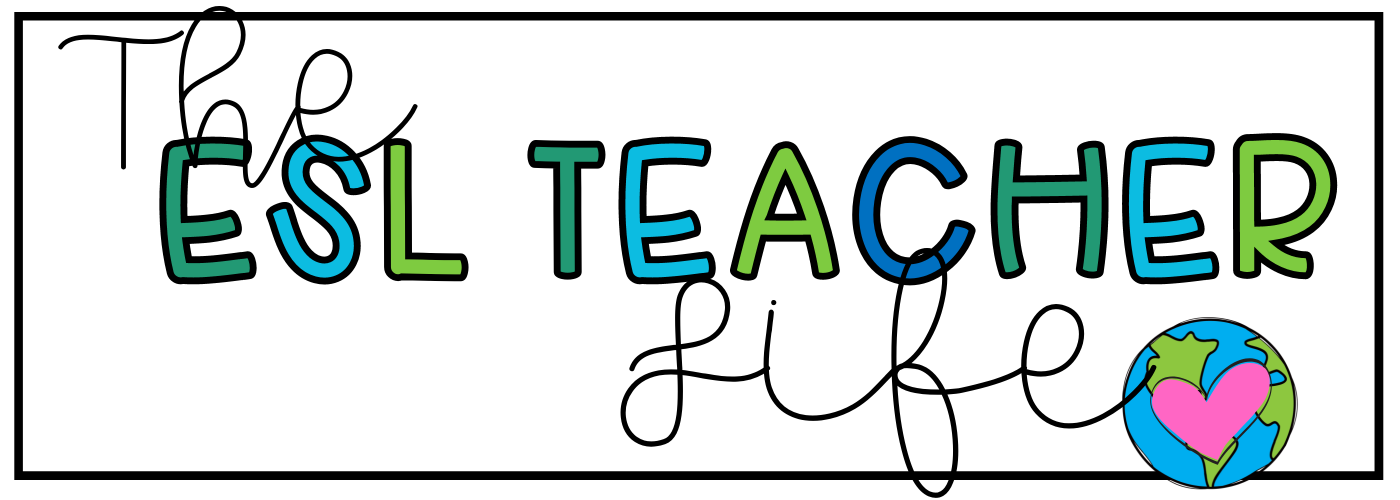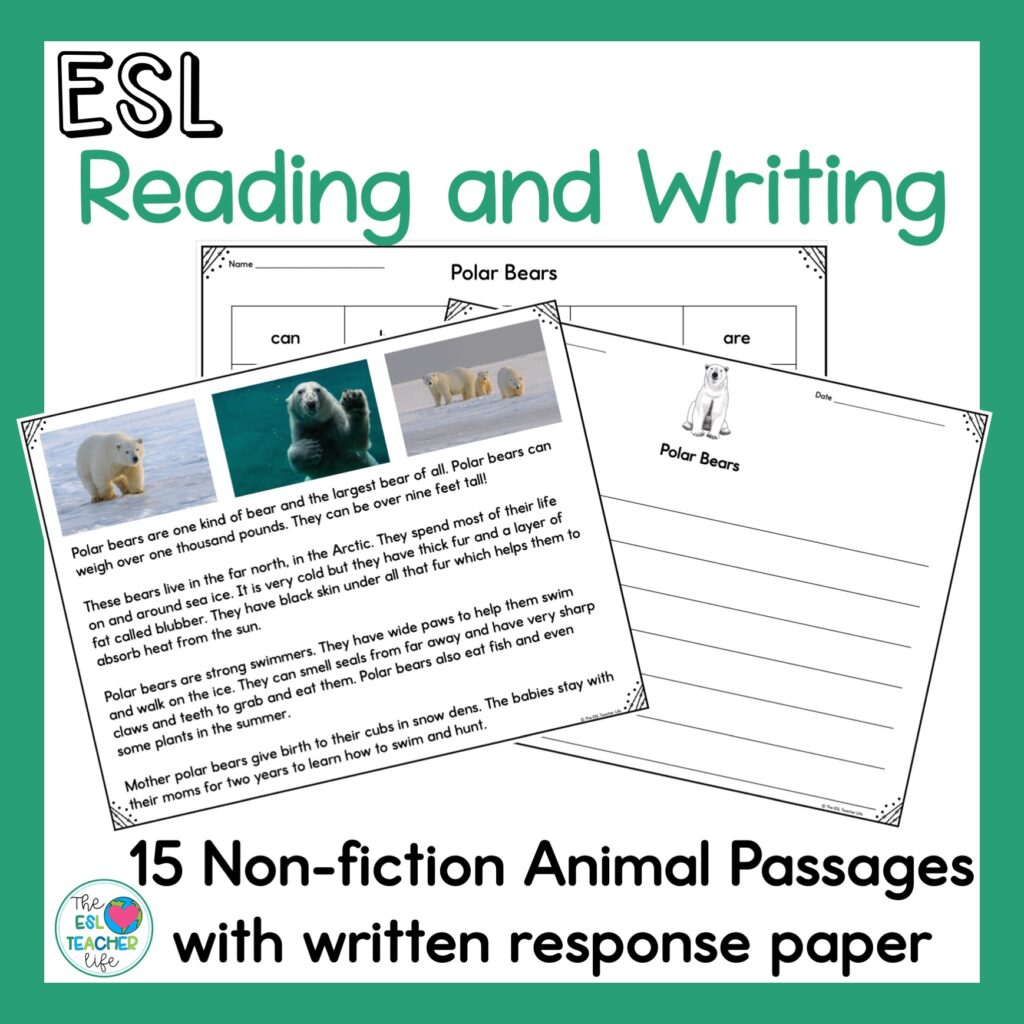Are you looking for ESL reading activities that give your students independent reading practice and integrate all four domains? Here is a lesson plan format you can use with almost any non-fiction topic. Animal traits happen to be an engaging subject that lends itself to the WIDA Key Language Use of Inform and is found in many grade level curriculums. Below is an example of an ESL lesson plan I used with first and second grade.
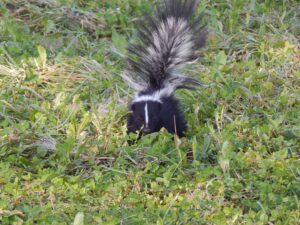
Generate interest in the topic
With all of my ESL reading activities, I want to hook students and gauge prior knowledge on a topic. I like to look for an image that sparks curiosity and conversation. I often ask, what do students see, think, and wonder? For my lesson, I used an amazing photograph of a fox and a skunk from nwf.org. (I can’t share it here for copyright reasons. I recommend a quick google search.)
ESL Reading Objectives
There are several possible objectives but here are two examples:
Content objective:(CCSS)RF1.3-We will know and apply “s blends” to read “Skunks.”
Language objective: We will read and write using the following 6 vocabulary words: skunk, musk, spray, spring, stomp, and sting, and sentence starters.
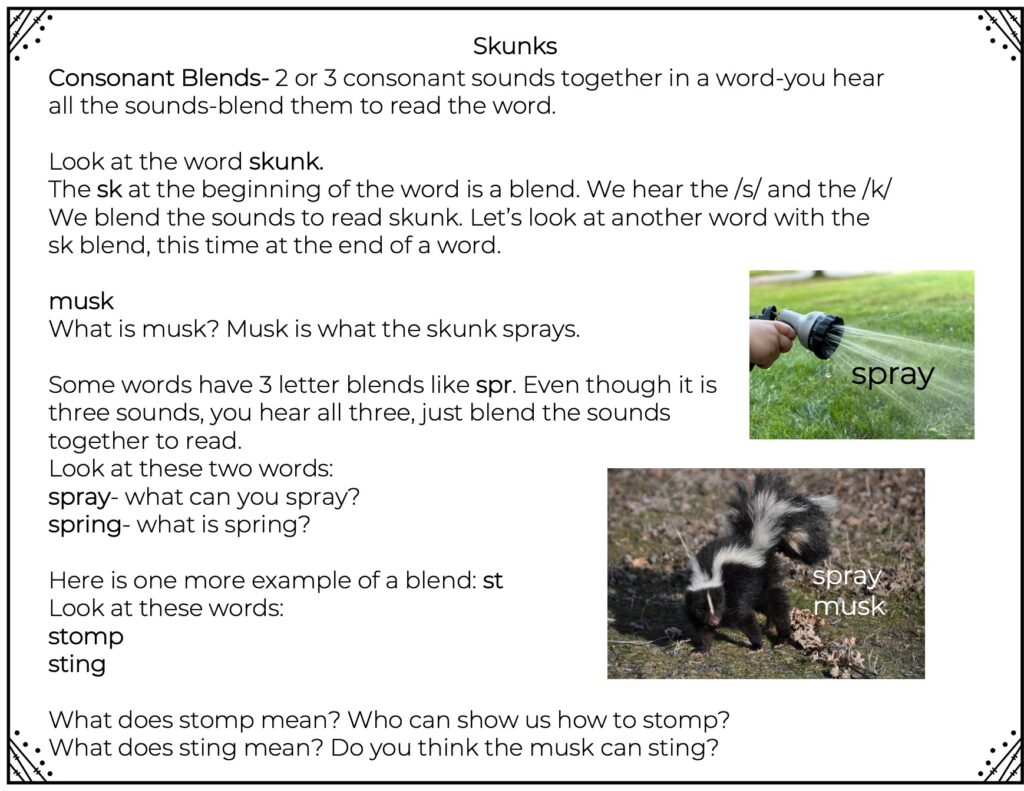
Front load vocabulary
With this lesson I combined vocabulary with phonics practice, specifically blends. We read the words and went over their meanings. I explicitly taught how to read these words and what they mean. Next we highlighted these words in the passage. The words scared, small, and sniff are also in the passage and students often point these out as they highlight. (This is a great opportunity for students to work together.)
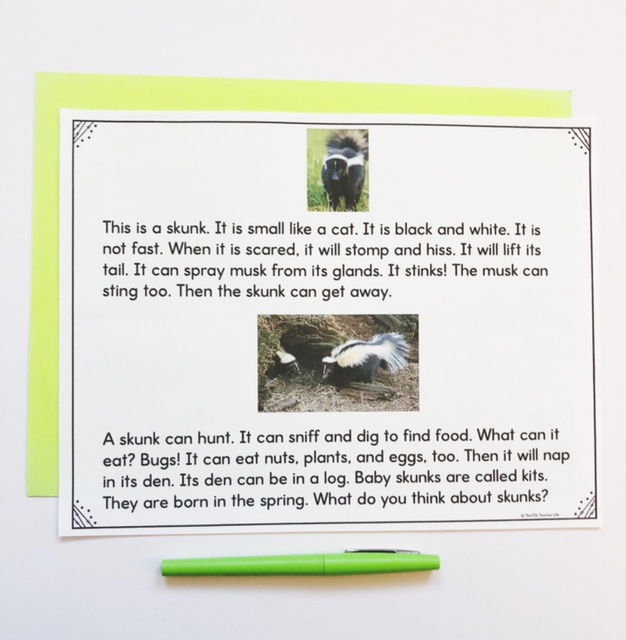
Read and discuss.
I like to incorporate passages that students can read independently once the phonics skills have been taught. For example, I controlled the vocabulary in this passage above to ensure practice with reading words with blends (/s//k/, /s//t/ and /s//p//r/) and limiting the number of words that have spelling patterns they have yet to learn. Then students were ready to read.
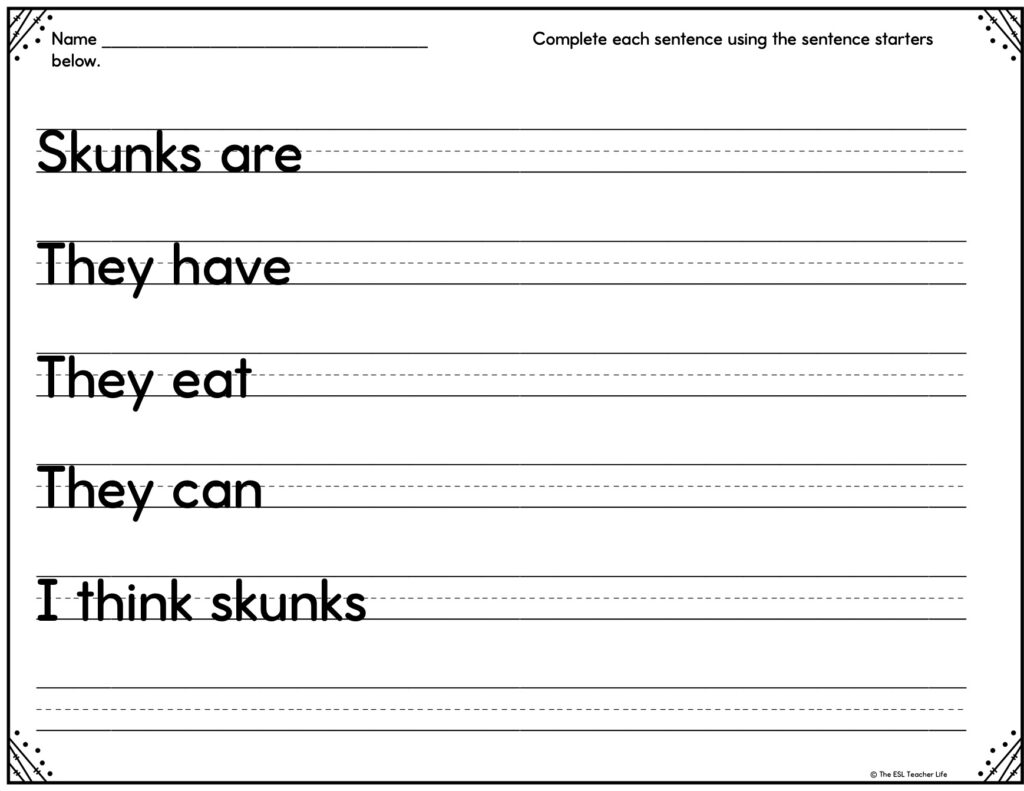
Write and share.
After reading, we did a short writing assignment to give students a chance to use the vocabulary and allow me to do a quick check of their comprehension. Sentence starters helped support this group of English Learners, and ensured they were giving specific information from the text. Students will progress to gathering their own information from a text with less scaffolding. The reading passage on skunks and the skunk sentence starters above can be found here, or by clicking on the photo below. It is part of a group of ESL reading and writing activities about different kinds of animals.
